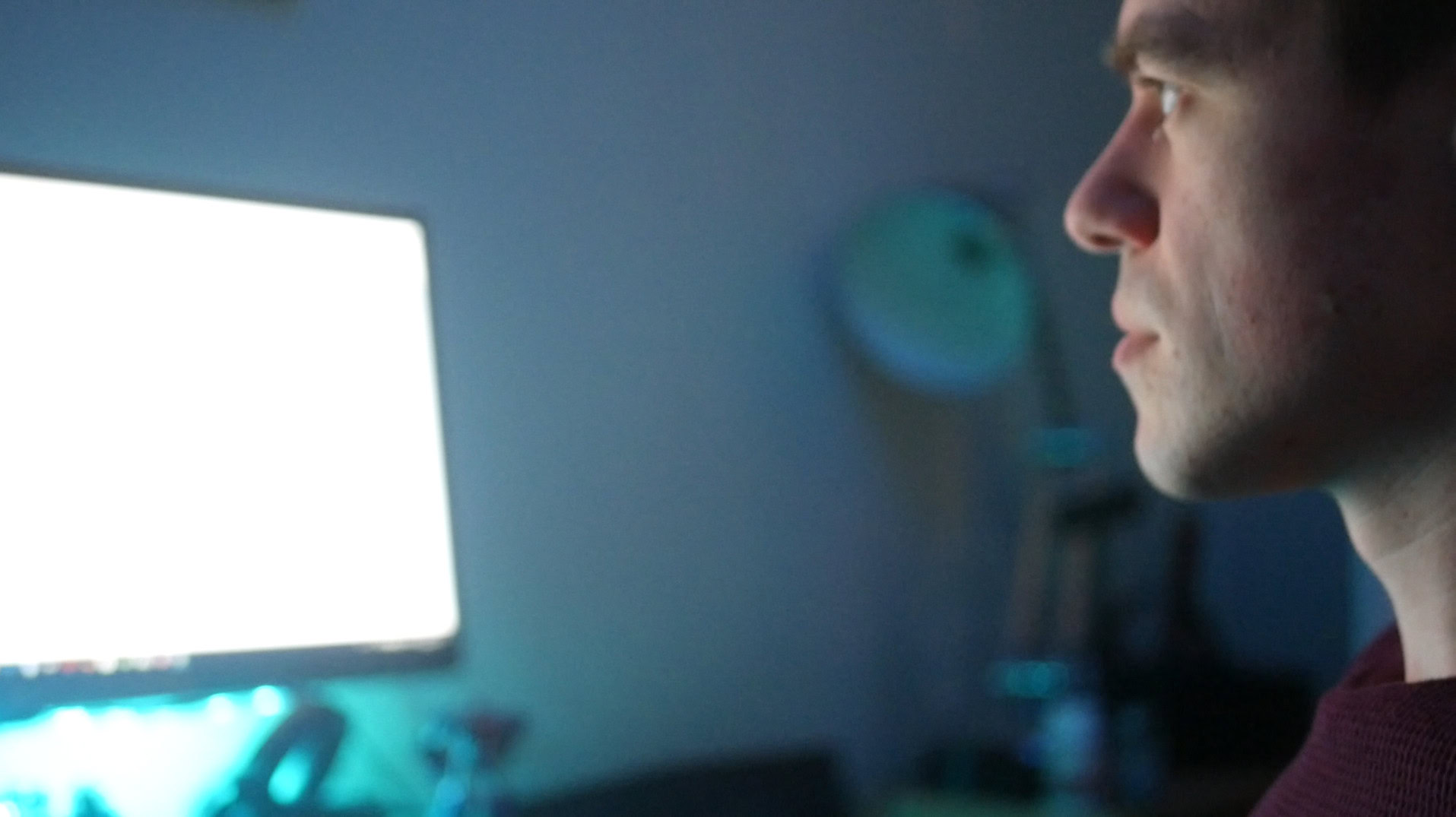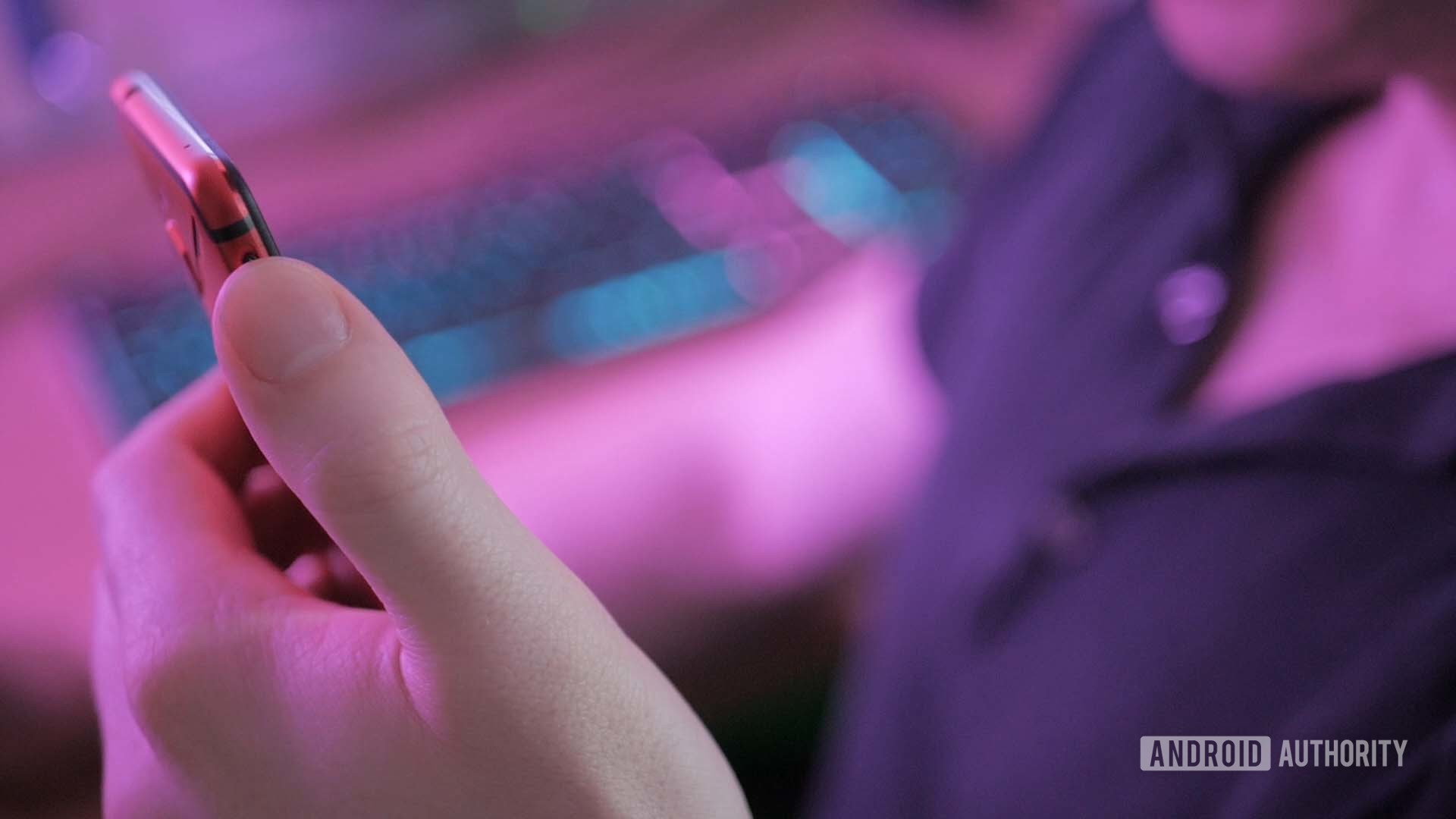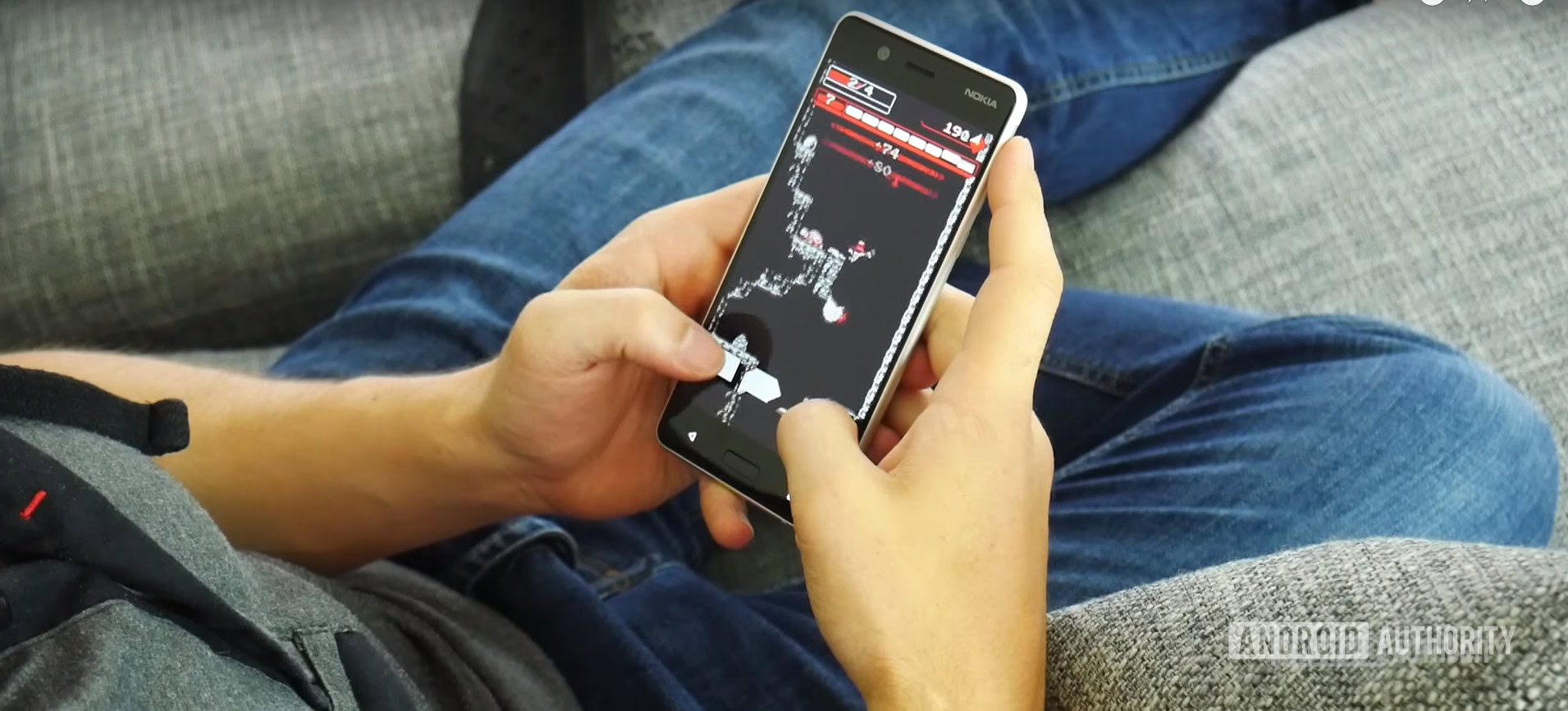Affiliate links on Android Authority may earn us a commission. Learn more.
How your smartphone is changing your brain
Published onFebruary 21, 2020

We all know that we’re supposed to limit screen time. And we’ve all heard that staring at a phone all day is bad for us. Facebook is rotting our brains, or so some say. This, in a nutshell, is the concept behind “digital wellbeing” — to try and limit screen time to keep the potential impact of this technology in check.
But many of us have a tendency to ignore this warning. After all, phones are fun! What’s often missing from this advice is precisely why using phones too much can be unhealthy.
In this post, we’re going to take a deep-dive into the psychological effects of smartphone use, and how it could potentially cause damage.
How your phone is damaging your brain
I want to start this section with a disclaimer: phones are not “bad.” If they were, I probably wouldn’t have opted to become a mobile tech journalist! Phones do lots of remarkable things for us. They have made the world smaller, by bringing us closer to our friends and family (especially transformative for the lonely and immobile). They have massively expanded our access to knowledge, with the potential to make us all wiser. And they help us to become more productive individually, and as a species. Social media has been responsible for positive political change, and the average person now has access to more powerful creative tools than ever before.
And did you know that computer games can actually improve our spatial awareness, reaction times, and visual acuity?
Phones are not bad.
But with all that said, technology also has some potential deleterious effects on the brain, and that’s what we need to be aware of. Here are just some of the causes for concern.
The internet is shortening our attention spans
One of the biggest concerns of the digital wellbeing movement is restoring the average attention span.
The “goldfish effect” refers to the fact that the internet may be shortening our attention spans. The National Centre for Biotechnology Information claims that the average attention span dropped from 12 seconds in 2000 to 8 seconds in 2013, and placed the blame firmly at the doorstep of internet use.
This seems to track with the fact that the average user spends less than 15 seconds on each web page on average. Marketers and copywriters know this too, which is why they design text with lots of bold and underlining; so that you can get the information you need within that time.

This is also why online adverts work so hard to grab our attention. It’s why you’ll see flashing banners in the corner of the screen whenever you’re trying to read an article.
With so much information available to us, we have become incredibly good at “sifting.” This involves quickly ascertaining whether we’re on the right page, finding the specific fact or detail we’re looking for, and then moving on to the next thing. Gone are the days when we would gain knowledge by leasing a book from the library and reading it cover-to-cover. And seeing as the brain operates on a “use it or lose it” principle (technically known as neuroplasticity), it should come as no surprise that we are becoming worse at focusing for long stints when we need to.
That said, not everyone agrees with this theory, and others even suggest that attention spans are task-dependent. It’s certainly something to be cautious of though.
Gone are the days when we would gain knowledge by leasing a book from the library.
Smart digital wellbeing strategies need to limit the amount of mindless surfing we do, and balance that with activities that require longer, sustained attention.
Smartphones can hurt productivity
According to “digital distraction expert” Gloria Mark, it takes 23 minutes and 15 seconds to resume focus on a task following any kind of distraction. Of course, this is an arbitrary and random number, but the truth is that there is a big difference between looking at your screen and being truly engaged with your work. It takes a significant amount of time to enter what psychologists refer to as a “flow state.”

This wouldn’t be a problem if we were left to work uninterrupted for long stretches, but that’s where smartphones become an issue again. According to research by Clever Tap, the average US smartphone user receives 46 push notifications every single day, and for some of us that number is likely much larger. That’s 46+ times that your attention is being pulled away from your work, your downtime, or quality time with your children.
And there are times where this can be dangerous too, such as when you’re driving.
Again, in the interests of balance, I should point out that there are many apps and tools out there that significantly boost productivity. The key is simply knowing how to get the most out of your tech, while remaining firmly in the driver’s seat.
Smartphones are addictive
Smartphones are designed to be addictive. Like Pavlov’s dog, you have been conditioned to associate the chime of a WhatsApp message with contact from friends and the associated warm fuzzy feeling. The bright colors of app icons and the satisfying way they animate when you tap them likewise gives you a little kick every time you do it. You have probably even come to enjoy the weight and feel of the phone in your hand.
Games like Candy Crush are far more insidious, using countless psychological tricks to give us a feeling of reward for swiping and popping candy. And don’t get me started on Facebook likes!

Without even mentioning how this leads to bad decisions (like spending lots of money on in-app purchases or posting semi-nude photos to Instagram), this addictive nature makes smartphones very bad for our mental health.
Each time we engage in any of these rewarding behaviors, our brain releases a chemical called dopamine. This neurotransmitter is associated with reward, and is produced in the brain when it thinks we are working toward a reward. Dopamine feels good, and as such, actions that result in its release are reinforced. The problem is that over time, the brain responds to these large amounts of dopamine by reducing dopamine receptors. Receptors are the “keyholes” that respond to dopamine molecules, thus facilitating their action in the brain.
Without some kind of stimulation, we feel agitated and restless.
That means that the dopamine is no longer able to have as much impact on our mood and focus, so we need a bigger hit to get the same effect. It also means that without some kind of stimulation, we feel agitated and restless.
Dopamine is also implicated in many other aspects of mental health, including focus and attention. Dopamine imbalance has even been connected to attention deficit hyperactivity disorder (ADHD) – a condition that has been on the rise.
If you have ever found yourself staring at your phone’s homescreen wondering what app you can click, then that’s probably a sign of addiction and low dopamine sensitivity.
Smartphone addiction becomes a problem if it means you’re engaging less with other things that used to bring you enjoyment
Meanwhile, a survey conducted by Microsoft found that 77% of people aged 18-24 responded “yes” to the question “When nothing is occupying my attention, the first thing I do is reach for my phone.”
Smartphone addiction becomes a problem if it means you’re engaging less with other things that used to bring you enjoyment, or if it means the other issues on this list become exacerbated. It is the job of digital wellbeing to help curb this addiction.
It’s also true of course that anything can become addictive, and that there are more destructive habits out there! Playing Candy Crush because you enjoy doing so is not a bad thing in itself. Just make sure that you are always in control. If it’s not an addiction, you should be able to stop any time, right?
Smartphones are stressful

These days, very few of us know how to relax. After a long day at work, we tend to come home, reheat a ready-meal, and then sit in front of Netflix. While watching Netflix, we stare at our phones and flick through social media feeds, engaging in a practice known as “multi-screening.”
Not only is this further evidence of our over-reliance on smartphones and technology, but it also causes physiological arousal; the opposite of relaxation.
At any time, the body and mind sit somewhere on a spectrum between two states: sympathetic, or parasympathetic.
The sympathetic state, led by the sympathetic nervous system, is also referred to as “fight or flight.” It also typically coincides with catabolism. Here, the body is aroused because it is focused, scared, active, aggressive, or hungry. You see an increase in physiological signs of arousal such as muscle tone, blood pressure, pupil dilation, and heart rate. The body is priming you to become physically and mentally sharp, thereby ensuring you can handle the task at hand. In a fight, muscle tone would help you to punch harder and run faster, while increased blood viscosity would help blood clot and seal wounds.
But while blood is being directed in larger amounts to the brain and the muscles, it is also being directed away from other processes like digestion and immunity. This is why you get ill if you’re stressed for long periods of time, and it’s why you get butterflies before giving a speech.
The parasympathetic state meanwhile is also called “rest and digest.” We enter this state when we sleep, when we relax after a good meal, and whenever there is no immediate threat or challenge ahead. This is also known as an anabolic, and it is when the body is able to focus on repairing damaged tissue, digesting food, and cementing connections in the brain. We might find ourselves daydreaming, which engages the “default mode network” or “imagination network” of the brain, and helps to facilitate memory, imagination, and creativity.
When we constantly flood our brains with dopamine, cortisol, and adrenaline through mobile phone use, we prevent our parasympathetic system from kicking in.
In short, we need both states. They act like yin and yang, where increased time spent in rest and digest actually helps us to be “more on” the rest of the time. Digital wellbeing practices need to help us escape being in a state of constant arousal.
How phones prevent rest
When we constantly flood our brains with dopamine, cortisol, and adrenaline through mobile phone use, we prevent our parasympathetic system from kicking in. We are telling the brain that it needs to focus, needs to work, needs to shoot zombies… and as such it never switches off.
This is worse if we are playing computer games, or getting messages from our bosses (which can cause a big spike in stress hormones!), but even reading a webpage can cause the same issue. That’s because the colors, sounds, adverts, and even the light from the screen all cause this physiological arousal.

In fact, light from our mobile screens is so effective at increasing cortisol that it can prevent the release of the sleep hormone melatonin at night, seriously hurting sleep quality! (Sleep is the body’s most anabolic state.)
Our modern lifestyles leave us in a constant state of mild stress and arousal, so much so that adrenal fatigue is sometimes referred to as “21st-century syndrome”. Drinking coffee and staring at phone screens do nothing to help this matter.
Digital wellbeing practices should help us to limit screen-time, and thereby to sleep better and remain more relaxed throughout the day.
Social media use can increase risk of depression
Social media may worsen depression via an effect called “social comparison.”
Social comparison theory proposed by psychologist Leon Festinger, suggests that our happiness is very often predicated on the success of others. In other words, if you have a two-bedroom house with one bathroom and no drive, but yours is the nicest house on the block, you’ll be happy. But if your neighbors are billionaires with a mansion, you’ll find yourself constantly comparing yourself to them and feeling depressed as a result.
Thanks to Facebook, we are constantly being exposed to people with lifestyles far more extravagant and successful than our own.
The issue is that thanks to Facebook, we are constantly being exposed to people with lifestyles far more extravagant and successful than our own. We constantly see images of people on amazing holidays, buying beautiful homes, and giving birth to amazing children.
What we forget is that people only upload their highlights to social media. Thus, you are comparing your everyday life to a highlight reel of someone else’s. Your unconscious brain doesn’t make this distinction, however, and so you’re left feeling unsuccessful and unlucky by contrast.

The same thing happens when we see beautiful, airbrushed models, with perfect six-packs all over Instagram!
Read also: The case for regulating our smartphone use
Many philosophers and psychologists believe that happiness and contentment comes from learning to be happy with what you have, rather than trying to chase after the next great thing. But this is hard when our friends keep rubbing their success in our faces!
The internet may make us more politically extreme
Then there is the danger of “fake news.” The web has never exactly been a place for reasoned discussion and fact-based discourse. But right now, we are seeing more and more “fake news” and false reporting. Meanwhile, everyone is accusing everyone else of being “fake news” and we’re not sure where to look anymore.
This is only likely to get worse in an era of Deepfakes and AI bloggers.
What is true, is that advertisers learn our surfing behaviors in order to know precisely the kinds of posts and news we are likely to respond to. It’s suggested that this has even swayed election results, and the outcome of referendums.
This is only likely to get worse in an era of Deepfakes and AI bloggers.
The internet can also exacerbate the “confirmation bias” cognitive bias. This describes our tendency to seek out information that supports the views we already hold. In other words, if you are thinking of voting in a particular direction, chances are that you will read websites and blogs with the same political leaning. Your friends on Facebook probably have the same views too, meaning that your feed will be filled with posts that further corroborate your opinions.
Your friends on Facebook probably have the same views as you.
Then you post in a forum of your choosing, to a chorus of agreement. This is what we call an “echo chamber,” and it is highly likely to cause people to become increasingly more extreme in their views. It has even been suggested that the internet has this way facilitated the deep political divides that seem to be worsening all around the world.
Digital wellbeing could potentially help us to seek other sources of non-digital information and news, resulting in more balanced reporting.
Where to go from here
My aim here is not to frighten you, and as I said earlier: there are many great things to celebrate about smartphones and the internet. Rather, the point of all this is simply to illustrate the potentially deleterious effects that digital technology can have on our mental health and state of mind. That’s without touching on other issues such as slouching (kyphosis), cyberbullying, and privacy. Then there are the niche effects, like our increasingly narrow focus and loss of peripheral vision.
But I want to end this as I began: by reiterating that smartphones and social media aren’t “bad” in themselves. These things only become issues when we allow them to creep up on us, which is precisely why it’s so important we consider the potentially negative consequences. Perhaps I’ll wite a post about the ways that smartphones can improve our health in future.
For now, if you’re concerned and you’re keen to start curbing your reliance on technology, why not check out our post on the best digital wellbeing tips you can start implementing today?